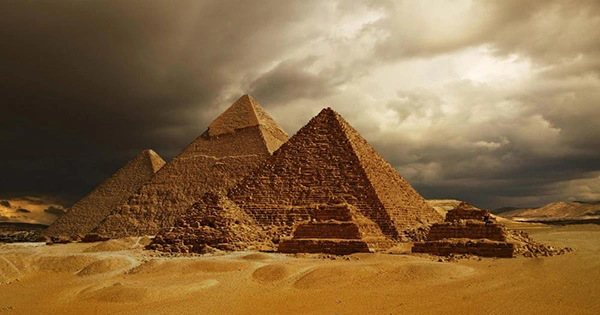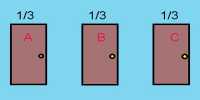The Great Pyramid of Tepanapa, also known as the Great Pyramid of Cholula, is a 2,000-year-old man-made edifice located in Mexico. It was completely overlooked by the Spanish troops during their 1519 invasion. When you consider that it is the largest pyramid on Earth, this is a remarkable oversight. Why didn’t they notice it? It is merely concealed inside a hill.
When Hernán Cortés invaded the city of Cholula on October 12, 1519, one of his most notorious actions was the Cholula Massacre. When Cortés’ army came expecting a battle, they were instead greeted by a sacred city that was thought to include a holy pyramid for every day of the year, buildings constructed to grant the city heavenly protection.
Instead, the several pyramids were targets of plunder as 3,000 people were killed (about 10% of the city’s population). The Spanish arrived in Cholula, appropriated the numerous religious treasures, and started building their own churches.
One of them, the Iglesia de Nuestra Seora de las Remediosa, would accidentally be put atop the Great Pyramid of Cholula, where it would eventually take on the function of a hat. It has a volume almost twice as enormous as the Great Pyramid of Giza and is the largest pyramid in the world at 66 meters (216 feet) tall and 450 meters (1,475 feet) broad.
The pyramid, also known as Tlachihualtepetl (Spanish for “man-made mountain”), really has the longest human occupation of any structure, helped along by its Spanish church hat. A bold claim for Mesoamerica’s biggest human monument ever built.
It was erected in four major stages, each of which had its own distinct style but left the previous buildings visible. Some believe this was done on purpose to preserve the building’s history. Up until the Spanish Conquest, it was a significant sanctuary devoted to mountain worship and a rain god.
Geoffrey McCafferty, an archaeologist, and author, cites Durán Diego’s statement in The Book of the Gods and Rites and the Ancient Calendar [1576–1579] that “In Cholula there existed a man-made hill called Tlachihualtepetl.” It was given this name because legend has it that the Giants constructed the now-destroyed structure in order to ascend to the heavens. This hill was highly revered; there was the customary and ceaseless devotion, prayers, massive sacrifices, offerings, and the killing of men.
We don’t yet know for definite how the massive pyramid ended up being buried. One idea holds that the dizzying construction was abandoned for a protracted period of time and eventually lost to vegetation, maybe as a result of volcanic activity or water. Another is that the Aztecs deliberately buried it to conceal it in advance of the conquistadors’ arrival.
By the time Cortés and his troops arrived, the greatest pyramid in the world had, in some way, changed into a convincing hill that was obviously suitable for a church. Even today, La Iglesia de Nuestra Seora de Los Remedios is perched atop Tlachihualtepetl.
It wouldn’t go unnoticed for very long, though.
The Franciscan priest Toribio de Motolinia’s “excavations” in 1535 while erecting a cross resulted in the recovery of “idols” and conch shell trumpets from the peak of the Great Pyramid, which led to the swift discovery of the pyramid’s archaeological significance, according to McCafferty.
Alexander von Humboldt, a German explorer, started conducting archaeological research at the location around the beginning of the 19th century. The pyramid in Mexico was described by him as “the greatest, most ancient, and most celebrated of the entire pyramidal constructions.” Further research started to eat away at its exterior in the 1930s.
In the 1970s, additional access to the pyramid’s interior and numerous strata was made possible through a network of tunnels that measured a total of 8 kilometers (5 miles). Without taking into account smaller additions and buildings that were eventually absorbed by later stages of Tlachihualtepetl’s construction, McCafferty calculates that it is made up of four construction phases.
The “adobe” bricks, which were formed of mud and were exceptionally durable in the environment of the area, were one type of construction style. Other bricks had a veneer of mortar, and some were finished with plaster. The location of the pyramid atop a natural spring with an internal chamber that would have served as an artificial “cave” to be symbolic of an entrance to the underworld also appears to have been carefully chosen in the context of its surroundings.
According to McCafferty, the summer solstice may have been tapped into by the pyramid’s cosmological position at 24-26° north of west, with the western stairway facing the sundown and the temple at the top soaking up the final rays of light on the longest day of the year.
However, given the limited information we have regarding its construction, it is impossible to determine how deliberate these choices were and whether they were in fact part of the structure’s spiritual practice (but it sure sounds like a golden hour on steroids). An approximately 17-meter-tall (56-foot) square pyramid served as the stacking dolls’ core framework. An insect-like body with a skeletal head portrayed in vibrant hues was depicted inside conserved paintings, “possibly a butterfly in the process of metamorphosis,” McCafferty speculated.
A second pyramid encircled it and reached a height of 35 meters (115 feet). It had steps on all of its sides, making it accessible from every angle. This was the foundation for several additions that increased the pyramid’s height to 66 meters (217 feet) before stage three got underway and increased the size of its base to 350 meters (1,150 feet) on each side. The pyramid now consisted of massive platforms arrayed around the main apex.
The Patio Of The Carved Skulls, so named from the plaster-covered human skulls that were constructed into its altar, is one of the notable elements of the pyramid and its several extensions that were later unearthed. The remains of a guy and female, along with grave goods, were found inside that alter, making it one of the “richest” Cholula burials that is known to exist.
There is still a lot to learn about the biggest pyramid in the world, but the good news is that McCafferty has money to keep exploring and investigating the location; according to his website, he visited Cholula again last year. We eagerly anticipate his findings, but IFLScience was unable to get in touch with him for comment.
Tourists are welcome at the historic location, which is also the location of the historic center that is recognized by UNESCO, where they are able to explore the Great Pyramid of Cholula. You can take tours that will let you see the Cholula ruins and its tunnel system from Mexico City.
















